Holiday makers are constantly on the hunt for a reason to munch on chocolate, so the calendar offers plenty of excuses to buy a bar. July 7 is also Chocolate Day, a nod to the historical tradition that the day marks when chocolate was
first brought to Europe on July 7, 1550, though a number of sources argue that it might have hit the continent’s shores as far back as 1504, thanks to Christopher Columbus. Official day or not, we do know that chocolate first arrived in Europe some time in the 16th century. There’s also National Milk Chocolate Day on July 28, International Chocolate Day on September 13, and, of course, National Bittersweet Chocolate With Almonds Day on November 7.
2. Chocolate Is Actually a Vegetable—Kind Of.
Milk and dark chocolate come from the cacao bean, which grows on the cacao tree (
theobroma cacao), an evergreen from the family
Malvaceae (other members of the family include okra and cotton). This makes the most important part of the sweet treat a vegetable.
3. White Chocolate Is Not Chocolate.
Because it doesn’t contain cocoa solids or chocolate liquor,
white chocolate isn’t chocolate in the strict sense. But it does contain parts of the cacao bean—mainly cocoa butter.
4. The Cacao Bean Is Native to Mexico and Both Central and South America.
It’s believed that inhabitants of these areas
first started cultivating the bean as far back as 1250 BCE, and perhaps even earlier.
5. Hot Chocolate Was The First Chocolate Treat.
Cacao was brewed in both Mexican and Aztec culture, though the result was nothing like today’s hot chocolate—it was a typically bitter concoction that was often used for ceremonial occasions like weddings.
6. Marie Antoinette Loved Hot Chocolate (The Modern Kind).
Marie didn’t just love cake, she also loved chocolate, and hot chocolate was frequently served at the Palace of Versailles. It wasn’t just the taste everyone loved—it was also believed that the drink was an aphrodisiac.
7. Cacao Was Once Used as Currency.
The Aztecs loved and valued the cacao bean so highly that they used it as currency during the height of their civilization.
8. Spanish Friars Helped Spread the Love.
After cacao and chocolate were
introduced to Europe, traveling Spanish friars took it to various monasteries, handily spreading it around the continent.
9. A Pair of British Confectioners Invented Solid Chocolate.
The Fry and Sons shop concocted what they called “eating chocolate” in 1847 by combining cocoa butter, sugar, and chocolate liquor. This was a grainy, solid form of the treat.
10. Cocoa and Cacao Are the Same Thing.
The words are
interchangeable! It’s all one bean.
11. Napoleon Loved Chocolate.
The French leader demanded that wine and chocolate be made available to him and his senior advisers even during intense military campaigns.
12. Baker’s Chocolate Isn’t Just For Baking.
Dr. James Baker and John Hannon founded their chocolate company—later called Walter Baker Chocolate—in 1765. That’s where the term “Baker’s Chocolate” comes from, not to denote chocolate that’s just meant for cooking.
13. Milton Hershey Really Was a Candy King.
The Pennsylvania native may be best known for starting The Hershey Chocolate Company in good old Hershey, PA, but he got his start in candy long before hooking up with chocolate. His founded his first company, The Lancaster Caramel Company, when he was 30 years old.
14. Milk Chocolate Was Invented in Switzerland
Daniel Peter created the tasty treat in 1875—after eight years of trying to make his recipe work. Condensed milk ended up being the key ingredient.
15. Making Chocolate Is Hard Work.
Despite its regal background and revered status, the cacao bean doesn’t just magically turn into chocolate—it takes about
400 beans to make a single pound of the good stuff.
16. The First Chocolate Bar Was Made in England.
Way back in 1842, the Cadbury company made the very first chocolate bar. The company is still in existence, and is perhaps most famous for their delightful Easter-themed treats.
17. Most Cacao Is Now Grown in Africa.
Despite its Amazonian roots, most cacao—nearly 70 percent of the world’s supply—comes from Africa. The Ivory Coast is the largest single producer, providing about 30 percent of all the world’s cacao.
18. Cacao Trees Can Live to Be 200 Years Old.
That may sound impressive, but the
tropical beauties only make viable cacao beans for just 25 years of their lifespan.
19. There Are Two Kinds of Cacao.
Most modern chocolate comes from
forastero beans, which are considered easy to grow—though the crillo bean is believed to make much tastier chocolate.
20. Chocolate Has a Special Melting Point.
Chocolate is the only edible substance to melt around 93° F, just below the human body temperature. That’s why chocolate melts so easily on your tongue.



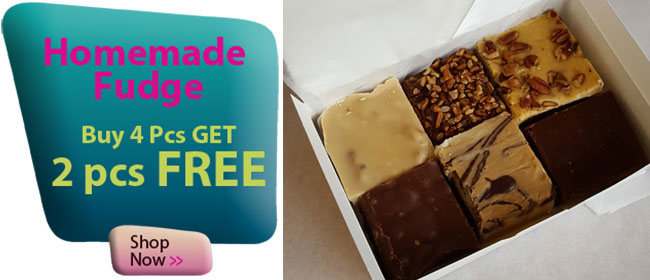
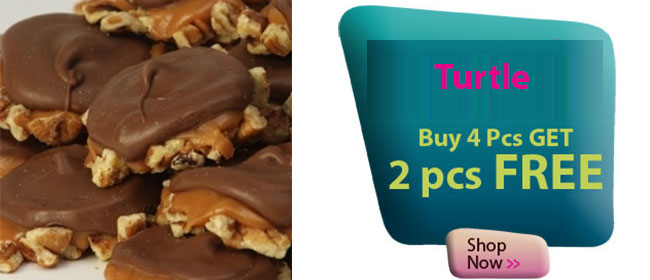



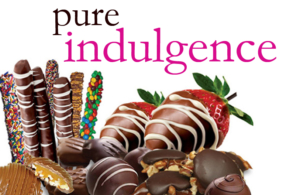

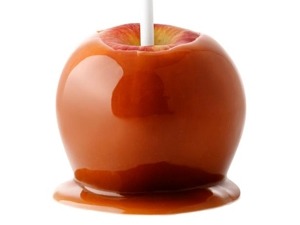
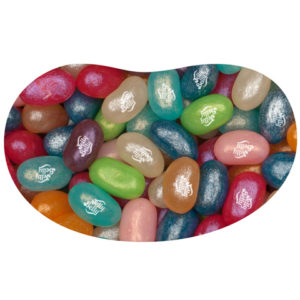 Jelly Belly jelly beans are familiar to just about everybody in America (and most likely the majority of people on earth). These tiny jelly beans, in their dozens of flavors, have single-handedly turned what was an unexciting gummy candy into a “gourmet” product, and they’ve earned the loyal devotion of millions.
Collected official flavors and stirred them up for the ultimate Jelly Belly assortment. Only one flavor is left out: Chili Mango. It’s just a little too hot to be eaten randomly.
Jelly Belly jelly beans are familiar to just about everybody in America (and most likely the majority of people on earth). These tiny jelly beans, in their dozens of flavors, have single-handedly turned what was an unexciting gummy candy into a “gourmet” product, and they’ve earned the loyal devotion of millions.
Collected official flavors and stirred them up for the ultimate Jelly Belly assortment. Only one flavor is left out: Chili Mango. It’s just a little too hot to be eaten randomly.
 Father’s Day is a celebration honoring fathers and celebrating fatherhood, paternal bonds, and the influence of fathers in society. In Catholic Europe, it has been celebrated on March 19 (
Father’s Day is a celebration honoring fathers and celebrating fatherhood, paternal bonds, and the influence of fathers in society. In Catholic Europe, it has been celebrated on March 19 (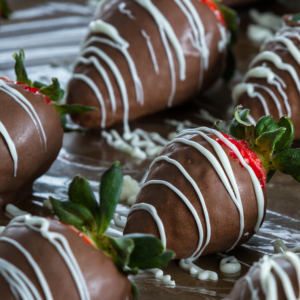


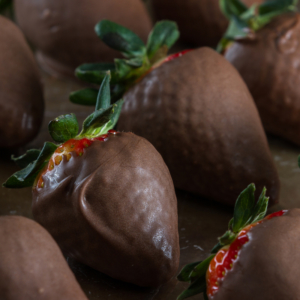

 Fudge is a type of confectionery which is made by mixing sugar, butter and milk, heating it to the soft-ball stage at 240 °F (116 °C), and then beating the mixture while it cools so that it acquires a smooth, creamy consistency. Fruits, nuts, caramel, candies, and other flavors are sometimes added either inside or on top. It is often bought as a gift from a gift
Fudge is a type of confectionery which is made by mixing sugar, butter and milk, heating it to the soft-ball stage at 240 °F (116 °C), and then beating the mixture while it cools so that it acquires a smooth, creamy consistency. Fruits, nuts, caramel, candies, and other flavors are sometimes added either inside or on top. It is often bought as a gift from a gift 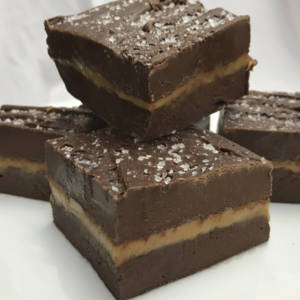
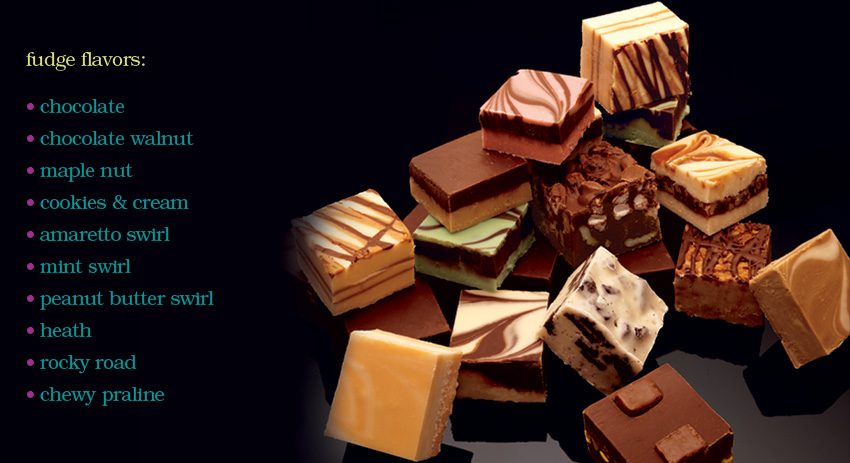






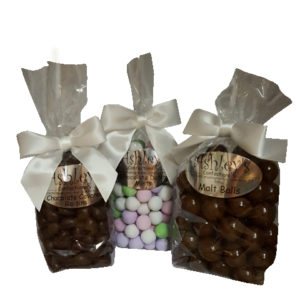 Chocolate is regarded as an indulgent treat because it is mainly associated with weight gain and acne. Americans spend $10 billion annually on chocolaty treats. It is not all bad news as countless studies show dark chocolate has many health benefits. Here are 20 you may not know about and which will help you to indulge in it with less guilt. In moderation of course – I mean, the guilt!
1. It can help your heart to stay healthy
Lots of studies reveal that the flavonoids in chocolate can help your veins and arteries to stay supple. Over 7 studies followed 114,000 participants who were given a few servings of dark chocolate a week. The results showed that their risk of getting a heart attack was reduced by about 37% while the chances of getting a stroke were 29% less when they had a higher consumption of chocolate.
2. It may help improve your memory as you get older
Research has shown that when elderly people were given specially prepared cocoa extracts which was high in flavanols, their cognitive function greatly improved. The only problem is that when it comes to eating chocolate, the percentage of those cocoa flavanols is much reduced due to the processing and the addition of eggs, sugar and milk.
3. It can help to avoid sunburn
One study conducted in London found that women who were given chocolate with a high flavanol content were able to withstand double the amount of UV light on their skins without burning, compared to those on lower doses.
4. It may make you better at math
I was never good at math at school. Maybe I should have eaten more dark chocolate! This is the startling conclusion I have reached after reading about the research of Professor David Kennedy who is Director of Brain, Performance and Nutrition at the Research Center of Northumbria University (UK). Participants were given 500 mg of flavanols in a hot cocoa drink. They benefited from increased flow to the brain as a result and were better at coping with difficult math equations.
5. It may put you in a better mood
I wish my uncle had given my aunt some chocolate when he told her to stop crying and to ‘cheer up.’ He obviously had not read about the work at the University of Swinburne in Australia. These guys again targeted the cocoa polyphenols and they found that it had a beneficial effect on the mood of the participants who were calmer and happier.
6. It may help lower cholesterol levels
The Journal of Nutrition carries an interesting article about the results of a study done to determine whether dark chocolate could have any effect on the LDL cholesterol levels. They found that when subjects were given bars of dark chocolate with plant sterols and flavanols, they were getting lower scores on their cholesterol levels.
7. It may help people with Alzheimer’s disease
As we know, the nerve pathways to the brain get damaged when Alzheimer’s disease strikes, causing severe loss in certain mental functions. It is fascinating to read about how one extract from cocoa, called lavado, can actually reduce the damage done to these vital pathways.
8. It can help you with your workout
Another magical flavanol in chocolate is epicatechin. Mice were given this substance and they were much fitter and stronger than those mice on water only. Researchers say that to get the best results from your workout you have to limit the amount to only about half of one square of chocolate a day! If you have too much, it could undo the beneficial effects.
9. It is very nutritious
Did you know that if choose chocolate with a high cocoa content (75% to 85%) you are getting a very nutritious snack? Take the typical 100 gram chocolate bar. It has almost all of your RDA for copper and manganese. It contains over half your magnesium RDA and about two thirds (67%) of your RDA for iron. It also has about 10% of fiber. There is also lots of zinc, selenium and potassium too.
10. It can help to lower your blood pressure
You may not know it but having the right amount of NO (Nitric Oxide) in your body can help your arteries to relax. That will, in turn help to take some of the pressure off them and the result is a lower BP count. Just another benefit of the dark chocolate flavanols which help to produce this vital Nitric Oxide.
11. It helps you produce more endorphins
When you are on a high, it may be due to excitement, love or after exercise. This high is due to the release of endorphins which are brain hormones. The great advantage of chocolate is that flavanols can also help in endorphin production without having to run a marathon! Endorphins play a key role in helping to prevent depression and other mental disorders.
12. It may reduce pregnancy complications
One of the complications of pregnancy is known as preeclampsia in which blood pressure can shoot up. Researchers have established that one of the chemicals in dark chocolate, theobromine, can stimulate the heart and help the arteries dilate. When pregnant women were given higher doses of chocolate, they had a 40% less chance of developing this complication.
13. It may help with diabetes
You probably think that chocolate is too sweet for diabetics and is one of their banned treats, but one small study at the University of L’Aquila in Italy found that the right does of chocolate flavonoids can help the body’s metabolism and enhance insulin function. This could benefit people with diabetes but more studies need to be done.
14. It may help you reduce your food cravings
You know the feeling: you cannot function until you have a snack. One of the healthiest is a piece of dark chocolate because it fills you up quicker and reduces craving for salty and sweet snacks, according to a small research study.
15. It may help your cough
Another marvelous effect of the theobromine chemical in chocolate is that it can calm a troublesome cough. Manufacturers are looking at this to produce safer cough syrups instead of using codeine which has some undesirable side effects.
16. It may help with blood circulation
Normally you take an aspirin to help prevent blood clotting and to improve circulation. Studies now show that chocolate can have a similar effect.
17. It can also help you see better
University of Reading researchers were curious to see if dark chocolate flavanols could actually improve vision as they knew it certainly improved blood circulation in general. They decided to do a small experiment and gave two groups of volunteers some white and dark chocolate. The dark chocolate groups were doing better on vision tests afterwards.
18. It may help reduce fatigue
If you suffer from Chronic Fatigue Syndrome you should try adding chocolate to your daily diet. One group of sufferers were given a daily dose of chocolate for two months. They were less tired and the best news of all is that they did not put on any extra weight.
19. It may help to lower your Body Mass Index
There has been a lot of emphasis on how chocolate can actually reduce your BMI (Body Mass Index) which is how you measure up as regards your height versus your weight. One study took 1,000 Californians and they found that those who ate chocolate more often during the week had a lower BMI. Overall diet and exercise regimes were not factors which influenced this result.
20. It may help reduce your chances of getting cancer
As we have mentioned, the cocoa flavanols in dark chocolate have both anti-inflammatory and antioxidant properties. These are important in keeping the actions of free radicals at bay. As we know, these are the protagonists when cancer starts to invade cells.
ENDORSED BY
Chloe Chong
Editor at
Chocolate is regarded as an indulgent treat because it is mainly associated with weight gain and acne. Americans spend $10 billion annually on chocolaty treats. It is not all bad news as countless studies show dark chocolate has many health benefits. Here are 20 you may not know about and which will help you to indulge in it with less guilt. In moderation of course – I mean, the guilt!
1. It can help your heart to stay healthy
Lots of studies reveal that the flavonoids in chocolate can help your veins and arteries to stay supple. Over 7 studies followed 114,000 participants who were given a few servings of dark chocolate a week. The results showed that their risk of getting a heart attack was reduced by about 37% while the chances of getting a stroke were 29% less when they had a higher consumption of chocolate.
2. It may help improve your memory as you get older
Research has shown that when elderly people were given specially prepared cocoa extracts which was high in flavanols, their cognitive function greatly improved. The only problem is that when it comes to eating chocolate, the percentage of those cocoa flavanols is much reduced due to the processing and the addition of eggs, sugar and milk.
3. It can help to avoid sunburn
One study conducted in London found that women who were given chocolate with a high flavanol content were able to withstand double the amount of UV light on their skins without burning, compared to those on lower doses.
4. It may make you better at math
I was never good at math at school. Maybe I should have eaten more dark chocolate! This is the startling conclusion I have reached after reading about the research of Professor David Kennedy who is Director of Brain, Performance and Nutrition at the Research Center of Northumbria University (UK). Participants were given 500 mg of flavanols in a hot cocoa drink. They benefited from increased flow to the brain as a result and were better at coping with difficult math equations.
5. It may put you in a better mood
I wish my uncle had given my aunt some chocolate when he told her to stop crying and to ‘cheer up.’ He obviously had not read about the work at the University of Swinburne in Australia. These guys again targeted the cocoa polyphenols and they found that it had a beneficial effect on the mood of the participants who were calmer and happier.
6. It may help lower cholesterol levels
The Journal of Nutrition carries an interesting article about the results of a study done to determine whether dark chocolate could have any effect on the LDL cholesterol levels. They found that when subjects were given bars of dark chocolate with plant sterols and flavanols, they were getting lower scores on their cholesterol levels.
7. It may help people with Alzheimer’s disease
As we know, the nerve pathways to the brain get damaged when Alzheimer’s disease strikes, causing severe loss in certain mental functions. It is fascinating to read about how one extract from cocoa, called lavado, can actually reduce the damage done to these vital pathways.
8. It can help you with your workout
Another magical flavanol in chocolate is epicatechin. Mice were given this substance and they were much fitter and stronger than those mice on water only. Researchers say that to get the best results from your workout you have to limit the amount to only about half of one square of chocolate a day! If you have too much, it could undo the beneficial effects.
9. It is very nutritious
Did you know that if choose chocolate with a high cocoa content (75% to 85%) you are getting a very nutritious snack? Take the typical 100 gram chocolate bar. It has almost all of your RDA for copper and manganese. It contains over half your magnesium RDA and about two thirds (67%) of your RDA for iron. It also has about 10% of fiber. There is also lots of zinc, selenium and potassium too.
10. It can help to lower your blood pressure
You may not know it but having the right amount of NO (Nitric Oxide) in your body can help your arteries to relax. That will, in turn help to take some of the pressure off them and the result is a lower BP count. Just another benefit of the dark chocolate flavanols which help to produce this vital Nitric Oxide.
11. It helps you produce more endorphins
When you are on a high, it may be due to excitement, love or after exercise. This high is due to the release of endorphins which are brain hormones. The great advantage of chocolate is that flavanols can also help in endorphin production without having to run a marathon! Endorphins play a key role in helping to prevent depression and other mental disorders.
12. It may reduce pregnancy complications
One of the complications of pregnancy is known as preeclampsia in which blood pressure can shoot up. Researchers have established that one of the chemicals in dark chocolate, theobromine, can stimulate the heart and help the arteries dilate. When pregnant women were given higher doses of chocolate, they had a 40% less chance of developing this complication.
13. It may help with diabetes
You probably think that chocolate is too sweet for diabetics and is one of their banned treats, but one small study at the University of L’Aquila in Italy found that the right does of chocolate flavonoids can help the body’s metabolism and enhance insulin function. This could benefit people with diabetes but more studies need to be done.
14. It may help you reduce your food cravings
You know the feeling: you cannot function until you have a snack. One of the healthiest is a piece of dark chocolate because it fills you up quicker and reduces craving for salty and sweet snacks, according to a small research study.
15. It may help your cough
Another marvelous effect of the theobromine chemical in chocolate is that it can calm a troublesome cough. Manufacturers are looking at this to produce safer cough syrups instead of using codeine which has some undesirable side effects.
16. It may help with blood circulation
Normally you take an aspirin to help prevent blood clotting and to improve circulation. Studies now show that chocolate can have a similar effect.
17. It can also help you see better
University of Reading researchers were curious to see if dark chocolate flavanols could actually improve vision as they knew it certainly improved blood circulation in general. They decided to do a small experiment and gave two groups of volunteers some white and dark chocolate. The dark chocolate groups were doing better on vision tests afterwards.
18. It may help reduce fatigue
If you suffer from Chronic Fatigue Syndrome you should try adding chocolate to your daily diet. One group of sufferers were given a daily dose of chocolate for two months. They were less tired and the best news of all is that they did not put on any extra weight.
19. It may help to lower your Body Mass Index
There has been a lot of emphasis on how chocolate can actually reduce your BMI (Body Mass Index) which is how you measure up as regards your height versus your weight. One study took 1,000 Californians and they found that those who ate chocolate more often during the week had a lower BMI. Overall diet and exercise regimes were not factors which influenced this result.
20. It may help reduce your chances of getting cancer
As we have mentioned, the cocoa flavanols in dark chocolate have both anti-inflammatory and antioxidant properties. These are important in keeping the actions of free radicals at bay. As we know, these are the protagonists when cancer starts to invade cells.
ENDORSED BY
Chloe Chong
Editor at